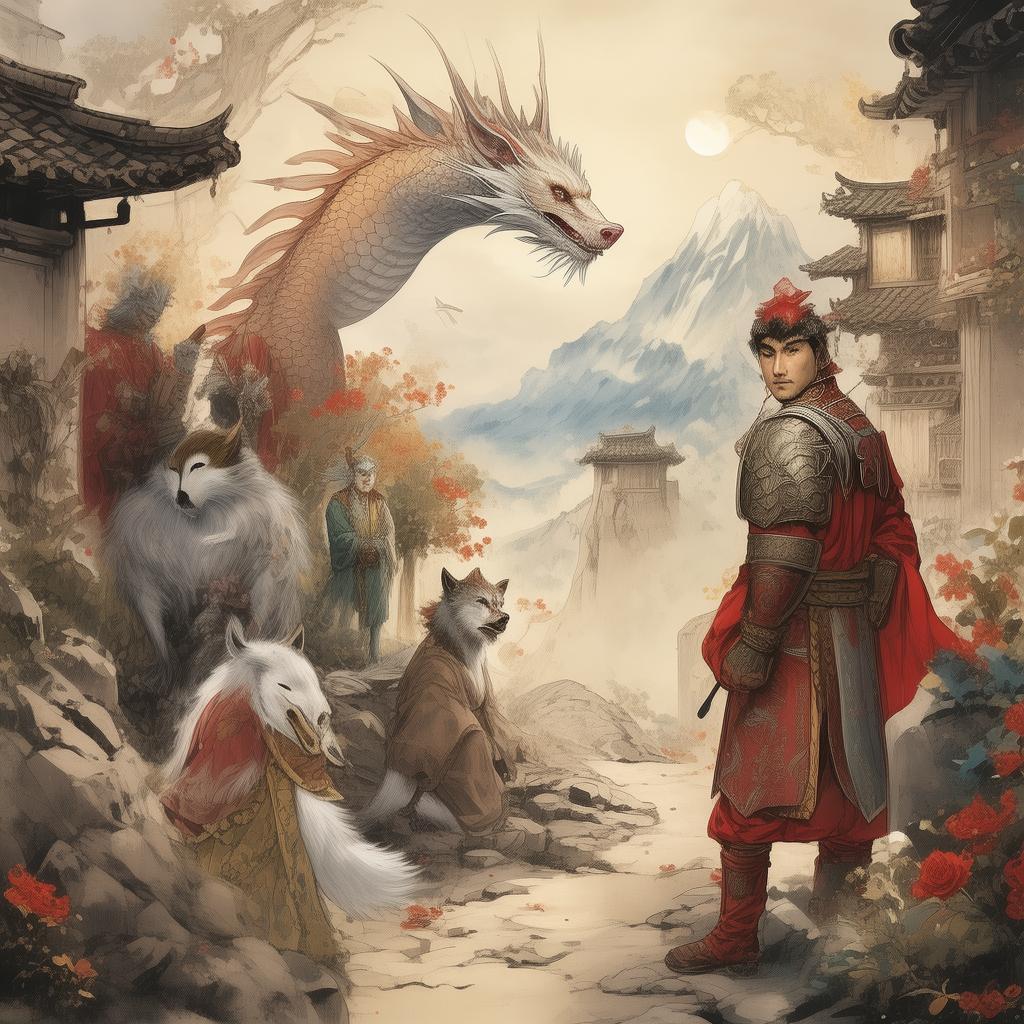The Whispering Willow
In the heart of the ancient village of Lingmo, where the whispers of the past seemed to weave through the cobblestone streets, there stood a willow tree that had seen more than a century pass. The villagers spoke of it in hushed tones, for the tree was said to be the guardian of a curse, one that had claimed countless lives over the years. It was a tale of a nobleman who had wronged a young maiden, and in his final moments, he cursed the willow to bear witness to the suffering of those who dared to seek revenge against its owner's descendants.
Among the villagers was a young woman named Mei, whose eyes held the fire of a thousand suns. Her father had been a victim of the curse, and Mei's life was a living testament to the injustice that had befallen her family. Her mother, driven mad by the loss, had vanished without a trace, leaving Mei to tend to her father's grave and nurse the wounds of her people.
One evening, as Mei sat by the flickering flames of her father's grave, she heard the faintest whisper of the willow tree. "Seek the truth, young one," it seemed to say. Mei's heart raced with a mix of fear and curiosity. She knew that if the curse was to be broken, it would require more than just her courage—it would require her to confront the shadows of her own past.
The next morning, Mei approached the willow tree, its gnarled branches reaching out like the fingers of an ancient specter. She placed a single white flower upon the ground, a silent offering to the spirit she believed to be watching. The tree seemed to respond, its leaves rustling with a life of their own.
Mei's journey began with the discovery of an old, tattered journal hidden within the hollow of the willow. The journal belonged to her great-grandmother, who had been the last to challenge the curse. It spoke of a hidden treasure that could unlock the tree's ancient power, but it also spoke of the danger that lay in its path.
As Mei delved deeper into the legend, she uncovered a web of deceit and betrayal that reached into the highest echelons of the village's power structure. She learned that the current village leader, who had always seemed benevolent, was in fact the descendant of the nobleman who had cursed the willow. The leader had kept the truth hidden for generations, using the curse as a means to maintain his control over the village.
With each step Mei took, the village around her seemed to shift and change. The once familiar faces of her neighbors became masks of suspicion, and the laughter of children was replaced by the eerie silence of the unknown. Yet, Mei pressed on, driven by a singular purpose: to break the curse and free her people from the shadow of the past.

Her quest led her to the edge of the village, where the path was overgrown with vines and the air was thick with the scent of decay. Here, she found an old, abandoned cottage that had once belonged to her great-grandmother. Inside, she discovered the hidden treasure—a chest filled with ancient artifacts and a scroll that detailed the ritual to break the curse.
The ritual was complex and required a sacrifice, not of life, but of something far more precious to Mei: her own innocence. As she prepared to perform the ritual, she was confronted by the village leader, who had learned of her discovery and sought to claim the treasure for himself.
A tense standoff ensued, with Mei forced to choose between her own survival and the liberation of her people. In a moment of revelation, Mei realized that the leader's own greed and fear had been the true source of the curse, and that the key to breaking it lay within her own heart.
With a newfound clarity, Mei performed the ritual, using the power of her love and forgiveness to dissolve the curse. The willow tree, once a symbol of darkness, began to shimmer with a soft, golden light. The village leader, struck by the transformation, confessed his wrongdoings and vowed to make amends.
As the curse lifted, the village of Lingmo was freed from its ancient burden. Mei's father's grave was no longer a place of sorrow but a monument to the courage and resilience of her people. And Mei, having faced the darkness within herself, found peace in the knowledge that she had been the one to bring light to her village.
The Whispering Willow stood as a testament to the power of forgiveness and the enduring strength of the human spirit. Mei's story spread like wildfire through the village, inspiring hope and unity among its people. And in the quiet of the night, the whispers of the willow tree seemed to echo with a new message: that the path to true freedom lies not in seeking revenge, but in seeking understanding.
✨ Original Statement ✨
All articles published on this website (including but not limited to text, images, videos, and other content) are original or authorized for reposting and are protected by relevant laws. Without the explicit written permission of this website, no individual or organization may copy, modify, repost, or use the content for commercial purposes.
If you need to quote or cooperate, please contact this site for authorization. We reserve the right to pursue legal responsibility for any unauthorized use.
Hereby declared.









